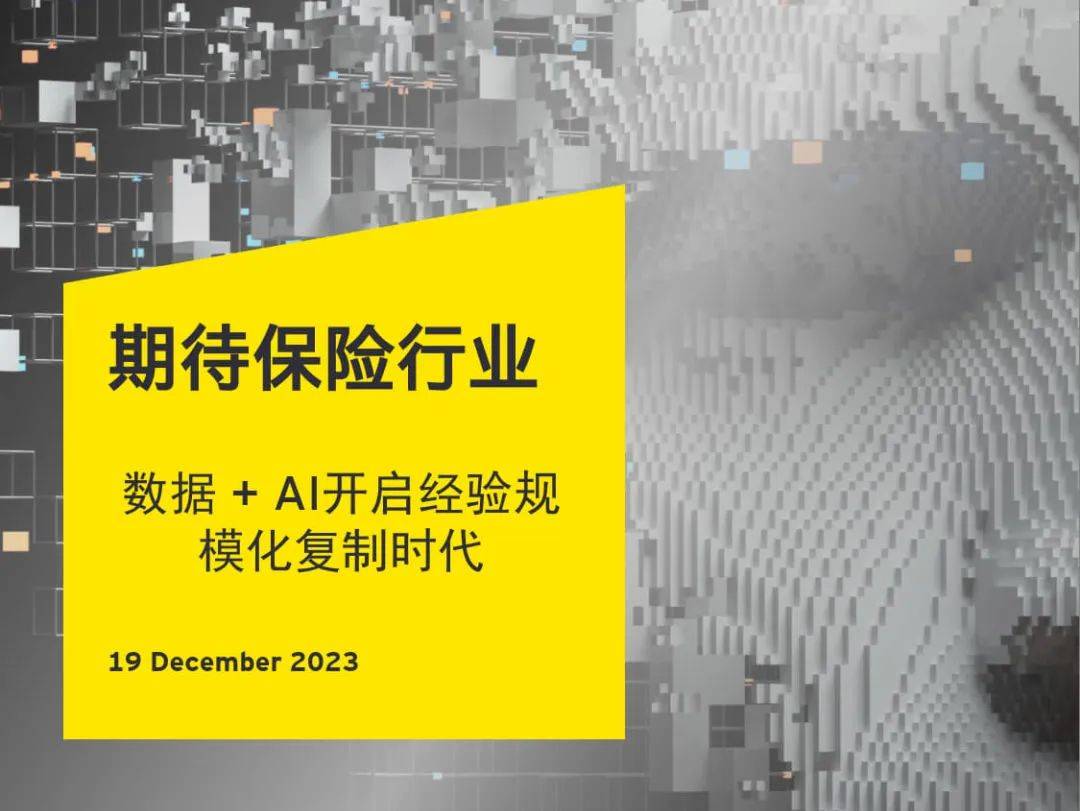Home >Technology peripherals >AI >The insurance industry is ushering in the era of data and artificial intelligence: large-scale replication of experience is about to begin
The insurance industry is ushering in the era of data and artificial intelligence: large-scale replication of experience is about to begin
- 王林forward
- 2023-12-20 14:15:371411browse

Artificial intelligence is experiencing a new wave of development. A leading company is turning to a platform that supports AI Agents, combining 4th generation artificial intelligence models and professional corpora, to enable business innovation. AI Agents are expected to inject new vitality into the business field and demonstrate the potential and business value of artificial intelligence. With the development of the platform, new AI Agents continue to emerge, providing professional, high-end, personalized, large-scale and continuous services. The innovation scope of artificial intelligence covers the fields of content generation (AIGC) and generation services (AIGS). The insurance industry is facing challenges, and breakthroughs in artificial intelligence have brought new ways to deal with it
Analysis of core issues facing the insurance industry’s artificial intelligence transformation:
It is recommended to use the "U-shaped thinking" method, starting from the initial problem and digging into its essence to find an accurate solution. By focusing on the main causes and making the necessary dimensionality/abstraction, the root cause of the problem can be found and made universally applicable
The construction of the insurance industry reference system refers to the establishment of a framework or system that can be used as a reference for the insurance industry. This framework or system includes a variety of indicators, methods and tools that can help insurance companies and practitioners in decision-making, evaluation and monitoring. By establishing a sound frame of reference, the insurance industry can better understand market trends, predict risks, and develop optimized insurance products and strategies. The construction of a reference system for the insurance industry requires consideration of multiple factors. First, indicators and data sources suitable for the insurance industry need to be identified to enable effective analysis and comparison. Secondly, it is necessary to select appropriate analysis methods and tools, such as statistical analysis, model building and risk assessment, to interpret and apply these indicators and data. In addition, a reliable data collection and management system needs to be established to ensure data accuracy and consistency. The construction of the insurance industry reference system is of great significance to insurance companies and practitioners. It can help them better understand market competition, evaluate their own competitiveness, and adjust strategies in a timely manner. At the same time, it can also help them better understand customer needs and provide personalized insurance products and services. The most important thing is that the construction of the insurance industry reference system can improve the overall efficiency and risk management level of the insurance industry and promote the healthy development of the industry
The impact of AI technology includes focusing on six major directions, analyzing technology cycles and cultural adaptability, and the impact of meso-cycles on industries and industries. At the same time, it also emphasized the profound impact of AI technology on the insurance industry, which will change the operating model, service efficiency and quality of insurance companies, and provide important support for service scale. In the future, with the continuous development of technology, AI technology will promote changes in the value laws of the technology industry, paying more attention to application innovation and service improvement
Insurance companies’ advantages and capabilities in applying artificial intelligence technology:
Insurance companies can improve operational efficiency by analyzing their own strengths and using artificial intelligence technology, including in product design, marketing, underwriting and claims settlement. The streaming conversation capability of the artificial intelligence application development framework can improve the efficiency of front-end and back-end development
Methodologies that insurance companies can refer to when applying artificial intelligence technology:
By using methods such as Value Flywheel, Value Net, and Canvas, enterprises can better understand business logic, identify key drivers, and achieve more comprehensive optimization. These methods provide effective tools to help companies sort out their ideas, find the core driving force for business development, and establish clear strategic logic. At the same time, the canvas method can graphically present various elements in the value network and more intuitively reveal the relationships and interactions between them. These methods can improve the company's operational efficiency and value creation capabilities, avoid dependence on the old value network, continuously optimize and improve the value network, and achieve higher efficiency and value
You can visit this address and follow the relevant prompts to read the original text of the report: https://mp.weixin.qq.com/s/V-6tKW5wmT4896IMScTSnA
This content is for general information purposes only and does not constitute reliable accounting, tax, legal or other professional advice. For specific advice, please consult your advisor
The above is the detailed content of The insurance industry is ushering in the era of data and artificial intelligence: large-scale replication of experience is about to begin. For more information, please follow other related articles on the PHP Chinese website!

